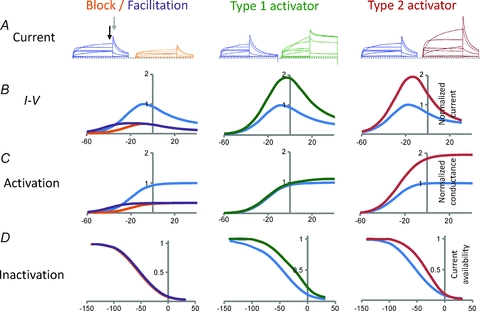Figure 1. Schematic representation of block, facilitation and activation of hERG channel currents.

Current traces and current–voltage relationships have been colour coded according to recording conditions – blue, control; orange, block; purple, facilitation; green, type 1 activator; red, type 2 activator. To facilitate comparison, all currents in the presence of the modulator are shown normalized relative to peak control value. A, hERG currents obtained by depolarization of the membrane potential to voltages between −60 mV and +40 mV (in 20 mV increments). Following each test pulse the membrane potential was stepped to −70 mV in order to invoke tail currents. Initially the tail current rapidly increases to a peak (grey arrow) due to the rapid recovery from inactivation and then more slowly decreases due to closure of the activation gate (deactivation). B, end pulse current–voltage (I–V) relationships. Current measured at the end of each test pulse (indicated by black arrow in A) was plotted against voltage. Current increases progressively with potentials up to −10 mV, but then declines at more positive voltages due to voltage-dependent inactivation. C, the voltage dependence of activation. Peak tail current amplitude (indicated by grey arrow in A) plotted against the preceding test pulse potential. D, the voltage dependence of inactivation (or current availability). Currents are maximally activated with a strong prepulse and current availability measured from extrapolated peak currents with voltage pulses to potentials between −160 and +40 mV. At negative potentials there is no channel inactivation and so current availability is close to 1, whereas at positive potentials channels inactivate and current availability declines toward 0. hERG channel blockers (left panels, orange lines) reduce hERG current without effecting channel gating properties. Facilitators (left panels, purple lines) also reduce hERG current, except at voltages negative to −30 mV, where a small increase in current is observed (adapted from Hosaka et al. 2007). This increase is due to a small hyperpolarizing shift in the voltage dependence of activation (see C). Type 1 hERG activators such as RPR260243 (centre, green traces) enhance hERG current by a dual mechanism of slowing channel deactivation (see tail current in A) and reducing inactivation by shifting the voltage dependence to more positive potentials (D). The predominant mechanism of action for type 2 hERG activators such as PD118057 (right, red traces) is to reduce channel inactivation by shifting the voltage dependence to more depolarized potentials (D), without affecting activation or deactivation properties.
